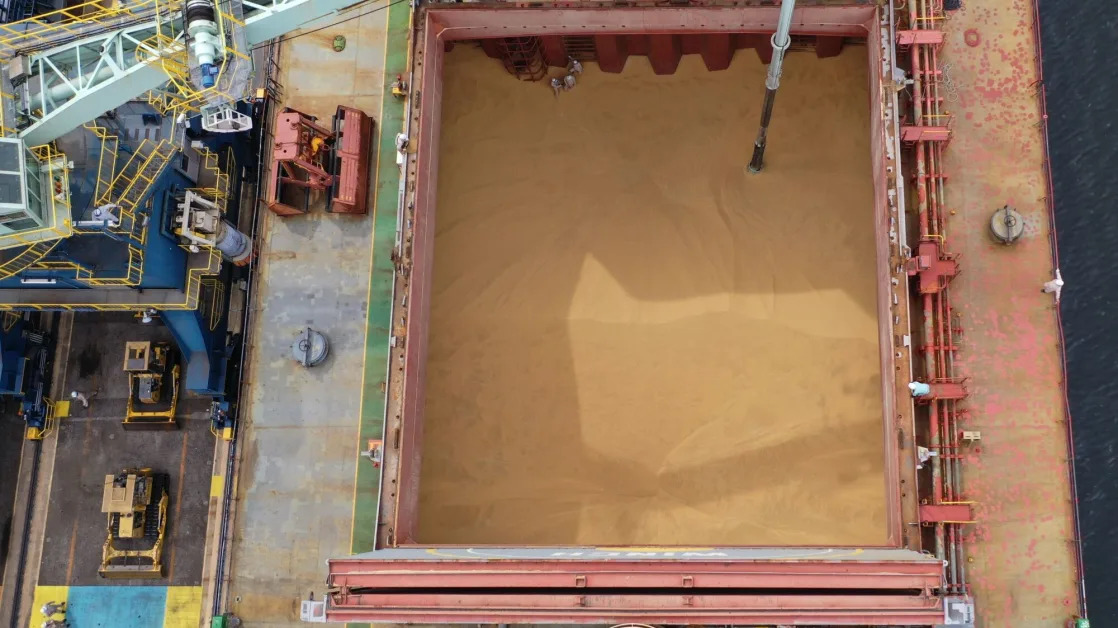By Howard Schneider
WASHINGTON (Reuters) -U.S. Federal Reserve officials who have said they needed more details before estimating the economic impact of President Donald Trump's trade plans got perhaps more than they bargained for on Wednesday when he unveiled sweeping tariffs analysts say could dramatically reshuffle the country's economic outlook.
The levies, which Trump gleefully displayed as a globe-spanning leaderboard of import tax rates, feature a baseline 10% for major trading partners like the European Union, higher still at 25% for Canada and Mexico, a massive 46% on Vietnam and potentially more than 50% for China. Within hours economists were penciling in a U.S. recession and drawing comparisons with the 1930s and even the late 1800s, early in the country's industrial development.
On average, imports may now carry a tax as high as 27%, Citi economists estimated, with higher levies on some types of goods and some countries and lower ones on others. Less than three months ago at the end of Joe Biden's presidency, that rate was about 2.5%.
If the logic of the administration's detailed plans escaped many private sector analysts - administration officials say it will lead to American economic renewal after a "transition" - the implications had already begun to register among Federal Reserve officials.
After battling inflation for two years and coming close to containing it while keeping the unemployment rate low, U.S. central bankers are now wrestling with a concept they'd rather avoid - stagflation, or a situation where prices and joblessness rise together as they did in the 1970s, a low point for the Fed.
At the moment "we're certainly not in a stagflationary environment," Fed Governor Adriana Kugler said on Wednesday in remarks given just as Trump was unveiling his chart of tariff rates in the Rose Garden.
But "we may be in a situation where we're already seeing some upside risks to inflation and some real increases in inflation, at least in some categories...We may be seeing down the road a little bit of a slowdown as well," Kugler said. "We're paying close attention about, how much will that slowdown mean? How much will those upside rates to inflation be realized?"
Stagflation, she said, was by contrast "a big word...It means really corrosive inflation...And it means you have negative economic activity. You have a recession."
Some economists already were seeing the economy moving in that direction and were cutting forecasts for U.S. growth, if not worse.
"This is a recession-producing turn – if these tariffs stay in place," wrote TS Lombard economist Steven Blitz. "The damage from (Trump's) tack to reset trade may very well create a worse, less-healthy outcome."
MARKETS SINK
U.S. markets quickly absorbed the new risks. The dollar and yields on U.S. Treasury bonds fell, and major U.S. stock indexes were down at least 3% in afternoon trading. The tech-heavy Nasdaq was off 5.8% at one point, the worst drop since the early days of the pandemic in March 2020.
Investors in contracts tied to the Fed's benchmark interest rate appeared to think weakened growth would be a more significant short-term influence, and boosted bets the Fed will cut interest rates a full percentage point this year versus the three-quarters of a percentage point reduction seen before Trump's tariff announcement.
The drop in stock markets in particular could cause a pullback among higher-income consumers who have been a key prop to recent household spending.
"There remains a substantial amount of uncertainty around trade and this level of uncertainty of course can weigh on households' and businesses' investment," Fed Vice Chair Philip Jefferson said on Thursday, adding he does not want to "overreact" to new proposals.
"We're in a situation where it's going to be important to take our time and think carefully about their impact," he said.
In separate comments Fed Governor Lisa Cook noted that inflation expectations had already ticked higher "even before yesterday's larger-than-expected announcements on trade policy."
The "growing uncertainty," she said, was an argument for the Fed to stay on hold.
The Fed at its meeting last month kept its policy rate steady, with officials projecting two quarter-point rate cuts this year amid an outlook for slower growth and higher inflation.
But Powell acknowledged in his press conference afterwards that he and his colleagues may have been unusually swayed by inertia in their estimates given how little they could say with confidence about the next few months.
With Trump's announcement, their situation may have become even more complicated.
"The increased risks to both inflation and employment put the Fed in an even greater bind going forward," wrote Evercore ISI Vice Chair Krishna Guha, with the "messy" fallout from tariffs raising fears among officials that public inflation expectations may start to rise.
That could leave the central bank on hold to keep a grip on prices, or cutting fast if the economy slides.
"At this point the likelihood of no cuts, two or three cuts or five-plus in a recession are all roughly equal," he said.





